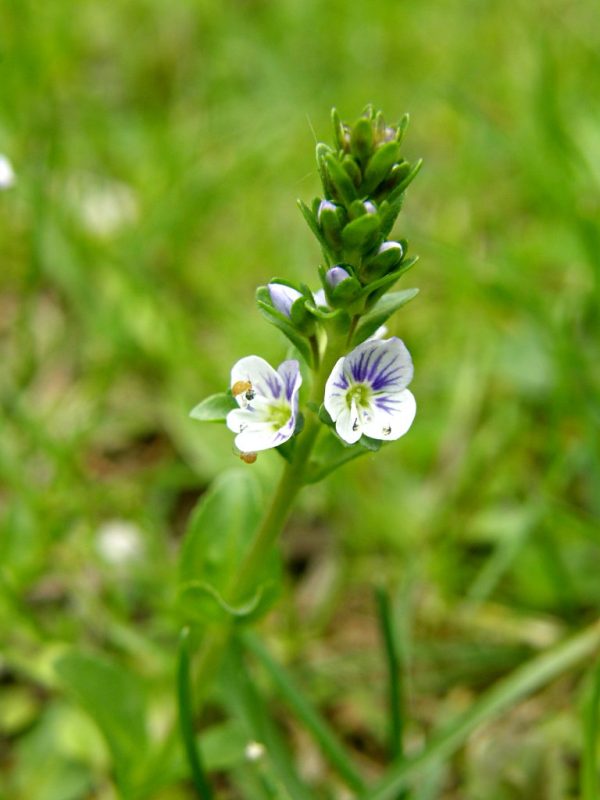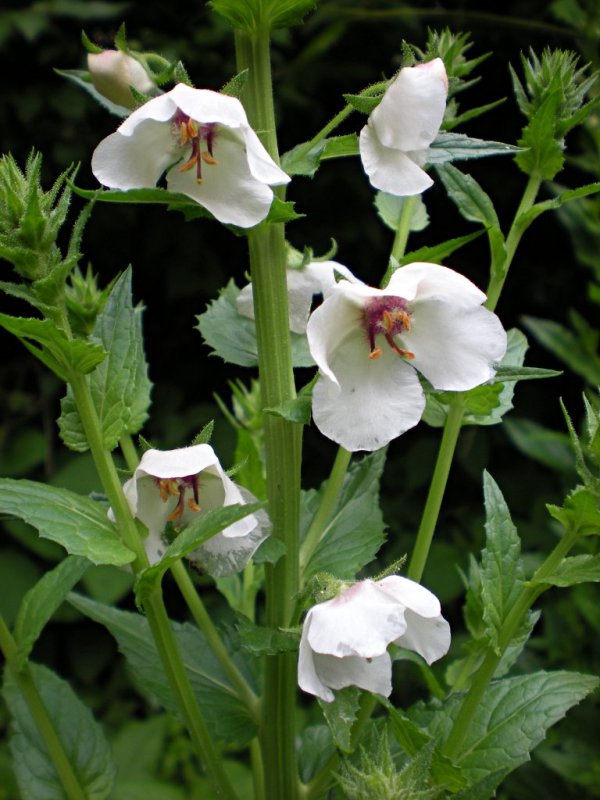
Surely these would be some of our most treasured ornamentals if they were just a little larger. Other members of the genus Veronica find honored places in our gardens, but the tiny Common Speedwells pass unnoticed under our lawn mowers. They’re worth examining closely. Magnified, as here, they turn out to be spectacular flowers. They’re found everywhere lawn grass is found; this one was blooming in Mount Lebanon at the end of April.
Gray describes the genus and the species:
The lateral lobes of the corolla or the lowest one commonly narrower than the others. Stamens 2, one each side of the upper lobe of the corolla, exserted; anther-cells confluent at the apex. Style entire; stigma single. Capsule flat- tened, obtuse or notched at the apex, 2-celled, few-many-seeded. Chiefly herbs ; flowers blue, flesh-color, or white. (Derivation doubtful; perhaps the flower of St. Veronica.)
V. officinalis L. (COMMON S.) Pubescent; stem prostrate, rooting at base ; leaves short-petioled, obovate-elliptical or wedge-oblong, obtuse, serrate; racemes densely many-flowered; pedicels shorter than the calyx; capsule obovate- triangular, broadly notched. Dry hills and open woods, Nfd. to Ont., Mich., and southw. May-Aug. (Eurasia.)




